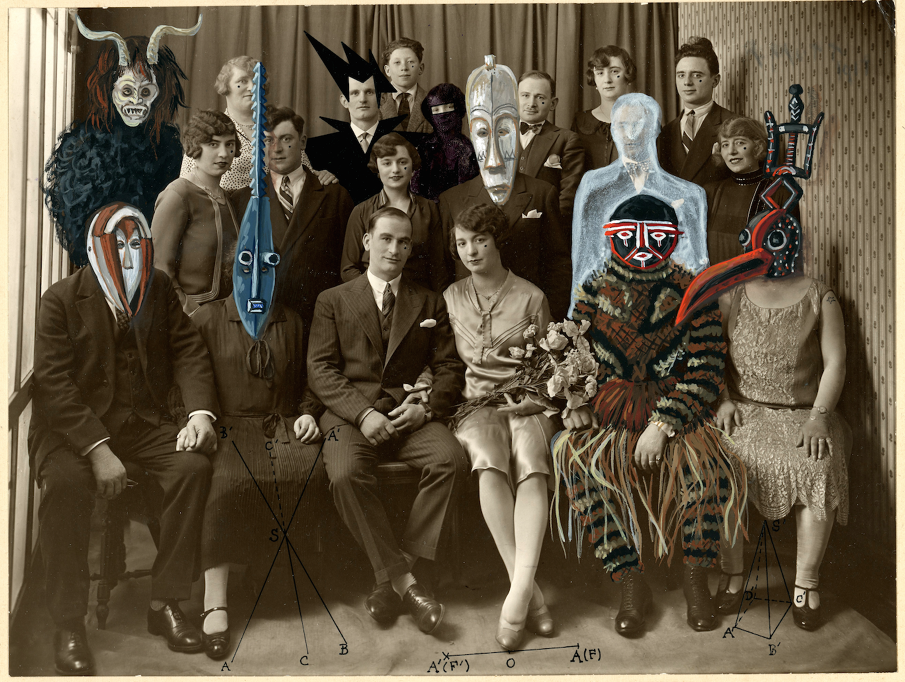An illuminating work of fiction inspired by Bombay Beach, a once a popular getaway destroyed by the draining and increasing salinity of the Salton Sea…
by: Francesca Spiegel
Joe Fisher, a painter and formerly stressed-out city dweller, was looking for a place where he could “let it all go,” a home away from home. He stumbled upon a satellite of Mars, called Bombay Beach, California. Right away, he traded in a few of his paintings and $5,000.00 in cash for a trailer and a sliver of Martian land. There were 215 other people living in Bombay Beach when he got there, and that was just the beginning.
Joe Fisher was ecstatic. So much of our lifetime is spent thinking: Help! I don’t fit in here! Usually, that’s followed by: Oh well, fuck fitting in! But if you’re cosmic, somewhere, somehow, a door will open and you’ll suddenly be in the right place.
Yet it wasn’t long until two strangers came knocking on his RV door. The strangers identified themselves as employees of a multinational chemistry giant (whose name hardly matters). The Giant made chemicals, like plant fertilizers and pesticides. Whenever Giant excreted, it used the Salton Sea as a toilet bowl. The Giant’s digestive cycles gave rise to the local seasons: fish carcass season, bird bone season, and foamy wave season. The Giant, the men explained, also had a side hustle in making drugs — especially Lithium.
That’s when Joe Fisher clocked it. The guys were lithium prospectors! They knew that his land had lithium on it, just under that silvery salt crust, and they wanted it.
Holy pringles, they want my lithium!!!
“Why don’t you go down the road to the Toxikon?” he suggested, pointing at a box-like apothecary installation on Avenue D. They’d get a proper consultation there. Because it was a hot day, and because Joe Fisher told them the pharmacist had a swimming pool and a grotto of shade, they went straight there. But it was no ordinary pharmacy. It belonged to an ancient Greek philosopher named Plato, who forthwith chained them to a rock and catapulted them into an infinite feedback loop between real and fake, truth and imitation, poison and healing, erasure and memory, reinvention, original, and copy of a copy of a copy. The lithium prospectors were never heard from again.

In time, the full extent of Fisher’ prank descended on the town like a reverse blight (you could say it was a blessing). More and more lithium prospectors showed up at Joe’s door, only to receive directions to the Other Place, which promptly hoovered them up into the metaphysical Gravitron that held them, splatted and dizzy, against its spinning walls from which they could never unstick themselves. It made Joe Fisher a local celebrity.
Fisher single-handedly sent ninety-one lithium prospectors into the void, as a prank, and the precious lithium remained in everybody’s soil. The Giant got misled into thinking that it was a rare metal, and that drove up Bombay Beach property value. Recently, Sotheby’s stuck a “SOLD” sign on a trailer it had listed for six million dollars and some petty cash. As any Bombay local will tell you, such sales are not unusual these days. As of this writing, real estate prices continue to skyrocket. Asked if he’s considered riding the wave and “cashing out,” Joe Fisher acts vague. Wealth whispers, and Fisher now looks over his shoulder.
“Property is a waiting game,” he winks, and then, a mysterious addition: “You know what they say…”
I don’t, to be honest. Meanwhile, heady predictions forecast the property prices soon to crack the eight-figure dinosaur egg. It may be only a matter of months until Fisher’s trailer home will be worth a healthy $10M, at which point, yes, he is willing to sell.
To understand the dynamics of modern-day Bombay Beach, it’s helpful to consider its history. Few people are aware that there is ancient history in Bombay Beach. In recent years, archaeologists have excavated artifacts and the mummified remains of the serene and long-lost Salton civilization. The ancient Saltonites, it’s now understood, were a profoundly hedonistic and yet peaceful, modest bunch. They lived in an matriarchal, equitably organized sharing economy, free from obstreperous displays of wealth, such as palaces.
The ancient Saltonite diet was based on freshly caught tilapia, of which they especially prized the delicious rectal rounds. Archaeologists found several samples of a dish named “fish assholes,” preserved in metallic cans. Most likely a burial gift, they were found next to the bodies of several perfectly preserved-in-salt mummies, including one of a woman giving birth. The terror in that woman’s face is so fresh, so immediately relatable, the discovery instantly got Salton a spot among the patrimony of UNESCO world heritage sites, making the names and careers of the entire research team–young dreamers who’d come out here on a shoestring, with just a few old maps, shovels, and a dream of finding Old Salton.
The new discoveries finally shed some light on the mysterious Eohippus discovered several years earlier, when contractors began work on the new Bombay Beach Underground station. Shaped like the rusty skeleton of a horse-robot on wheels, the Eohippus (“the little horse that could”) is now understood to have been an ancient ice machine and purveyor of frozen cubes to Old Salton revelers seeking chilled drinks on a desert summer’s night. It is but a small token of Old Salton’s levels of sophistication and technical advancement. Now, Bombay Beach is gearing up for more archaeologists to descend upon the town and pile into trenches, frantically digging for ever more and better remains of the once-elusive ancient Salton civilization.

Fascinating as it may be, material culture tells only a fraction of the story. Long before they went digital, the Saltonians existed as a text-based civilization. The Bombay Beach Poetry House and its several libraries are testimony that the Saltonites were a pretty logocentric bunch, with wisdoms, sayings and mantras inscribed and graffitied all over town. Some memorable and representative quotes are: “The less sense it makes, the more sense it makes,” carved on a door frame, a tablet that reads “The only way out is through,” and one saying “ETA: never.”
Among the more faded inscriptions, such revealing words as “Drive-in,” and “Lots for sale,” channel a cultural memory of Bombay’s gilded age, also known as the Resort Era of Bombay Beach (1929-1980). The Bombay Beach Museum of Bombay Beach owns a curated collection of texts and other documents. Resort-era postcards, oral histories and photo books can assist us in imagining what Bombay Beach must have been like, in its days of the electric pioneertown. Particularly poignant among them is the memoir Queen of the Salton Sea, written by the queen’s daughter, a princess. Between poles of boundless property speculation and the drunken hubris of man’s dominion over nature (it being the 1950s, it’s safe to assume it really is only “man”), the folly of a man-made desert beach resort must have felt miraculous. It’s possible that a sudden resurgence in the old voltage–a buried line, perhaps, rising from the dead with sizzling sparks–is also what’s powering the balloon flight of the Bombay Beach property bubble.
In parallel, Joe Fisher has emerged as the town’s new local hero. Myth is the mother of all history, and Fisher’s original prank is enshrined in the founding legend of New Bombay, as is the pride of inherited wisdom from the ancient Saltonites. Should you visit the Yacht Club, you can find Joe Fisher there, telling and retelling the origin story of Bombay’s civilization, its wealth and its riches. Most frequently, he regales visitors with the tale of a terrible shipwreck, that time the ancient Saltonians almost became extinct. Driven out from their first home, they were errant on earth, penniless, wounded, and humiliated. They had lost all their battles, and the ship that they’d built with their own hands was tossed around by an angry sea-god. It broke and started sinking, just off the shore of Salton. Tired, scared, and hungry, they decided to settle on the land, even though it was unknown to them, and they were moderately afraid of rattlesnakes. But their hearts were free, and they decided to be happy. They adorned the shores and their houses with metals, mirrors and tinsel reflecting the desert sun. Thus was born the glistening new city of blinding rays.
Such is the Bombay Beach that you can still visit today, and where I found myself breathing in lithium vapors. I sat on a long bench outside a red door of “Life’s Waiting Room” on it. My original intent had been to write a review of the Bombay Beach Biennale, but instead, I found myself writing this. I must have gone to the same place as the Lithium prospectors.
Stranger, if you can read this: Go to Bombay Beach.
Francesca Spiegel is a writer in Los Angeles. Read her nonfiction-mystery, set on a scorched and empty bicycle lane in East L.A. here. Francesca loves to write book reviews. Find her at francescaspiegel.com.







